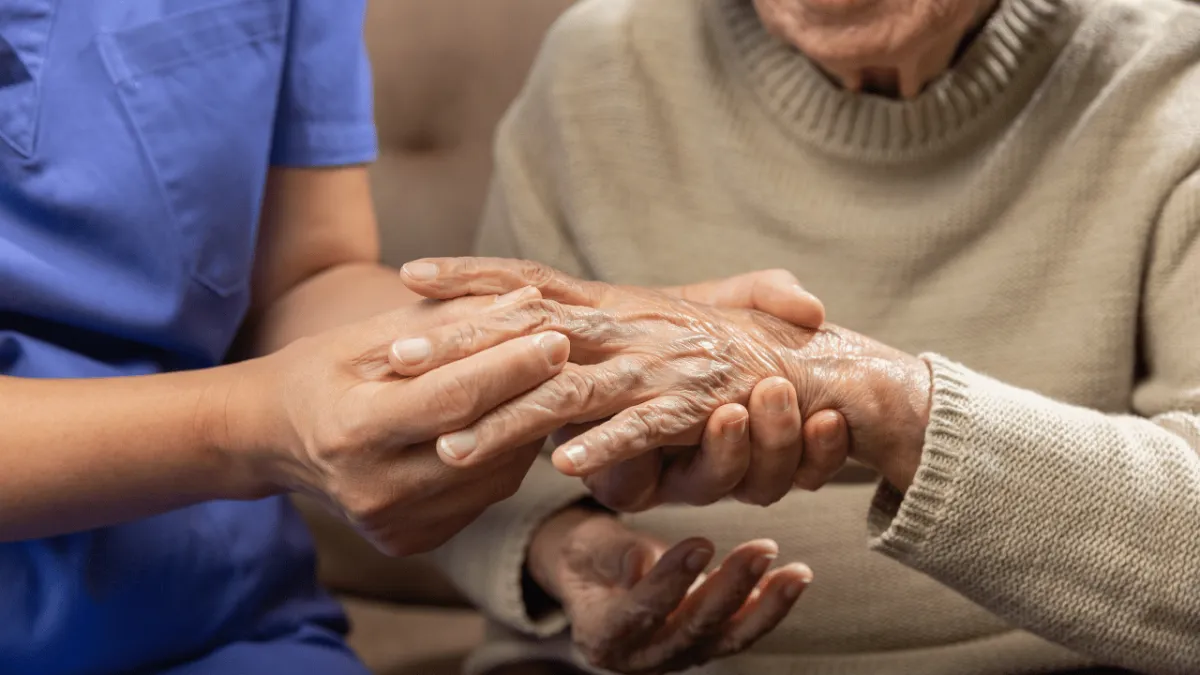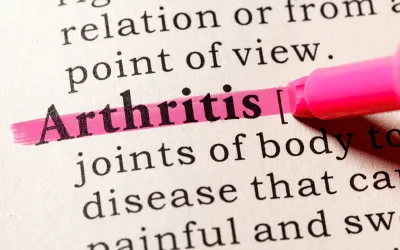About Arthritis
As the nation’s #1 cause of disability, arthritis affects nearly 60 million adults and 300,000 children. Over 100 types of arthritis and related conditions damage the joints and often other organs.
How can we assist you?
Helpful Tools for You

Taking Control of Rheumatoid Arthritis: Your Science-Backed Action Plan
Rheumatoid arthritis (RA) affects 1.3 million Americans, striking three times more women than men—often during their most productive years. Unlike the "wear-and-tear" arthritis that comes with age, RA is an autoimmune condition where your body mistakenly attacks healthy joint tissue. The result? Morning stiffness that lasts hours, swollen joints that feel warm to the touch, and fatigue that can derail your entire day.
Here's the empowering truth: while RA requires medical treatment, research shows that simple, affordable lifestyle changes can dramatically improve how you feel and function. These aren't pie-in-the-sky promises—they're evidence-based strategies you can start implementing today.
1. Move More, Hurt Less (Even When Joints Protest)
Why it works
A 2023 systematic review found that regular exercise reduced RA pain by 25% and improved physical function significantly compared to usual care. Movement helps maintain joint flexibility, strengthens the muscles that support your joints, and actually reduces inflammatory markers in your blood.
Action steps • Start with 10 minutes of gentle walking after meals—even around your house counts • Try chair-based exercises: seated marching, ankle circles, and shoulder rolls during TV time • Add resistance bands (under $10) for strength training twice weekly—focus on major muscle groups • Track your energy levels before and after activity to find your sweet spot
Cooney JK. Benefits of Exercise in Rheumatoid Arthritis. Journal of Aging Research. 2023.
2. Embrace an Anti-Inflammatory Diet Pattern
Why it works
Mediterranean-style eating patterns consistently show promise in RA research. A 2022 study found that participants following this approach for 12 weeks experienced reduced joint tenderness and improved quality of life scores compared to those eating a typical Western diet.
Action steps • Swap refined grains for whole versions: brown rice, quinoa, and whole-wheat bread • Add fatty fish (salmon, sardines, mackerel) twice weekly, or take 2-3g of omega-3 supplements daily • Include colorful vegetables at every meal—frozen varieties are budget-friendly and just as nutritious • Replace cooking oils with extra-virgin olive oil and snack on a handful of nuts daily
Vadell AKE. Anti-inflammatory Diet in Rheumatoid Arthritis (ADIRA)—A Randomized, Controlled Crossover Trial. Nutrients. 2022.
3. Prioritize Quality Sleep (Your Joints Will Thank You)
Why it works
Poor sleep doesn't just make you tired—it actually increases inflammation and pain sensitivity. Research shows that RA patients who improved their sleep quality experienced significant reductions in disease activity and fatigue levels within just eight weeks.
Action steps • Set a consistent bedtime and wake time, even on weekends • Create a wind-down routine: dim lights, avoid screens, and try gentle stretching 30 minutes before bed • Keep your bedroom cool (65-68°F) and invest in blackout curtains or an eye mask • If pain disrupts sleep, talk with your doctor about timing medications or using supportive pillows
Irwin MR. Sleep Disturbance, Sleep Duration, and Inflammation: A Systematic Review and Meta-Analysis. Biological Psychiatry. 2021.
4. Try Stress-Busting Techniques That Actually Work
Why it works
Chronic stress triggers inflammation and can worsen RA symptoms. A 2023 clinical trial found that mindfulness-based stress reduction led to meaningful improvements in pain, fatigue, and psychological well-being in RA patients after just eight weeks of practice.
Action steps • Download a free meditation app (Insight Timer, Headspace) and start with 5-minute guided sessions • Practice deep breathing: inhale for 4 counts, hold for 4, exhale for 6—repeat 10 times when stressed • Try progressive muscle relaxation before bed: tense and release each muscle group for 5 seconds • Schedule one enjoyable activity weekly that has nothing to do with your health condition
Rosen A. Mindfulness-Based Stress Reduction for Rheumatoid Arthritis: A Systematic Review. Current Rheumatology Reports. 2023.
5. Harness the Power of Heat and Cold Therapy
Why it works
Temperature therapy is one of the oldest pain management tools—and research backs it up. Studies show that alternating heat and cold applications can reduce joint stiffness by up to 30% and provide pain relief lasting several hours.
Action steps • Apply moist heat (warm towel, heating pad) for 15-20 minutes before activity to reduce stiffness • Use cold packs wrapped in thin towels for 10-15 minutes after activity to control swelling • Try contrast baths: alternate between warm and cool water for hands or feet • Invest in reusable gel packs (about $15) that can be heated or frozen as needed
Oosterveld FG. Thermotherapy in Rheumatoid Arthritis: A Systematic Review. Clinical Rehabilitation. 2022.
Your Quick-Start Action Plan
This Week: • Take a 10-minute walk daily • Add one serving of fatty fish or start omega-3 supplements • Set a consistent bedtime
This Month: • Try two new anti-inflammatory recipes • Download a meditation app and practice 5 minutes daily • Experiment with heat/cold therapy during flare-ups
Ongoing: • Track symptoms and activities in a simple journal • Build your support network—consider joining an RA support group
You've Got This
Living well with RA isn't about perfection—it's about progress. These evidence-based strategies work best when you pick one or two to focus on initially, then gradually build your toolkit. Remember, RA affects everyone differently, so what works for your neighbor might need tweaking for you.
Most importantly, these lifestyle approaches complement—never replace—your medical treatment. Work closely with your rheumatologist to create a comprehensive plan that includes both medication and these powerful self-care strategies. With the right combination, many people with RA live full, active, and joyful lives.
Small steps today can lead to big improvements tomorrow. Your future self will thank you for starting now.
f
Effects of Arthritis

Cause of Disability
In the United States, 23% of all adults, or more than 54 million people, have arthritis. It is a leading cause of work disability, with annual costs for medical care and lost earnings of $303.5 billion.

Workforce Effects
Sixty percent of US adults with arthritis are of working age (18 to 64 years). Arthritis can limit the type of work they are able to do or keep them from working at all.

Global Impact
In fact, 8 million working-age adults report that their ability to work is limited because of their arthritis. For example, they may have a hard time climbing stairs or walking from a parking deck to their workplace.
Promoting Interventions That Reduce Arthritis Pain
American Arthritis Foundation recognizes several proven approaches to reduce arthritis symptoms:
Be active. Physical activity—such as walking, bicycling, and swimming—decreases arthritis pain and improves function, mood, and quality of life. Adults with arthritis should move more and sit less throughout the day. Getting at least 150 minutes of moderate-intensity physical activity each week is recommended.
Protect your joints. People can help prevent osteoarthritis by avoiding activities that are more likely to cause joint injuries.
Talk with a doctor. Recommendations from health care providers can motivate people to be physically active and join a self-management education program. Should your arthritis be interfering with your activities of daily living you may be a candidate to receive many new treatments, and learn how to reverse the arthritis condition.
Have a question?
We're Here to Help
By providing my phone number, I agree to receive text messages from the business.


